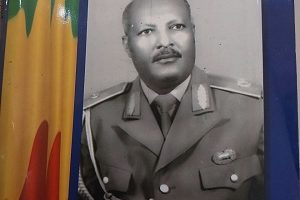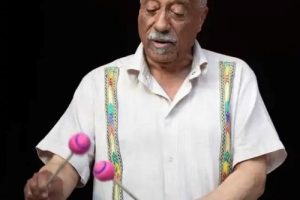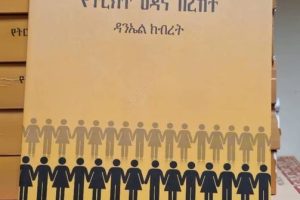
My first exposure to Gondar befell during my undergraduate studies at the University of Gondar. This initial encounter with the city left a profound impression on me, as I discovered a place of immense beauty and cultural depth.
During my exploration, I delved into Gondar’s rich past, discovering local folklore and witnessing vibrant cultural expressions. This experience deepened my appreciation for Ethiopia’s diverse heritage and the enduring legacy of its imperial history.
Gondar city was founded by Emperor Fasiledes in 1636 and holds a pivotal place in Ethiopia’s rich history. There are various legends about the foundation of the city. However; legend has it that the emperor’s choice to establish Gondar as a capital was influenced by its strategic location and fertile surroundings, fostering the city’s growth as both a commercial hub and a center of religious importance.
The era from Fasiledes’ reign through the mid-19th century is commonly referred to as the Gondarian period. This period is distinguished by impressive architectural accomplishments, including the iconic castles, palaces, and churches that remain standing today as UNESCO World Heritage Sites.
During this period, Gondar flourished as a vibrant cultural and political center, attracting artisans, traders, and religious scholars from across the region. The city’s architectural legacy reflects a unique blend of indigenous Ethiopian styles. This period represents a significant chapter in Ethiopian history, displaying the country’s artistic and architectural achievements during a time of political stability and cultural exchange. Today, Gondar’s historic sites continue to captivate visitors, offering a window into Ethiopia’s rich past and the enduring legacy of its imperial heritage.
One notable aspect of Gondar’s cultural heritage is its traditional folk dances. The most renowned is Eskesta, a rhythmic dance originating from the Amhara region.
Author Hailemariam Ephram defines Eskestain in his book “Dib Anbesa” as a dance characterized by the graceful up-and-down motion of the shoulders, emphasizing fluidity and expression through precise movements.
This dance style is deeply rooted in Ethiopian culture and history, serving as a means of storytelling, celebration, and communal expression. Its significance extends beyond mere movement, embodying the spirit and identity of Ethiopian folk culture.
Hailemariam Ephram’s definition captures the essence of Eskesta as a dynamic and engaging dance that conveys emotions and narratives through the nuanced articulation of the body, particularly the shoulders. The rhythmic swaying and controlled movements of Eskesta reflect the cultural richness and vibrancy of Gondar and its people.
During Eskesta performances, dancers often adorn themselves in traditional attire that reflects Gondar’s cultural heritage. These adornments carry personal and collective meanings, conveying stories, beliefs, and social status within Ethiopian society.
Men typically wear full-length garments like JANO or JUBA, sometimes paired with shorts and knee-high socks, creating a distinctive and dignified appearance this adorn symbolize the warriors, farmers, the royal families during the Gondarian period, and other routines of their ancestors.
On the other hand, female dancers’ costumes feature the iconic Gondar dress, the “Tilf,” a beautifully embroidered garment that exemplifies Ethiopian craftsmanship and artistic expression. Hairdos, such as “Shuruba,” incorporate culturally significant design. This paired with intricately styled beads, and other adornments like cultural jewelries and accessories, carry deep cultural symbolism of their wisdom, beauty.
This folkdance choreography consists of various types that can be broadly categorized into two main groups: men’s and women’s dances. The women’s dances specifically portray ideals of feminine virtue, wisdom, culinary skills and historical narratives, often reflecting the characteristics of a “good woman” as perceived within the community. These performances not only celebrate the rich history of female warrior but also embody the cultural wisdom and values that passed down through generations.
Conversely, men’s dances frequently depict themes of hunting, bravery, and warrior traditions. These performances often emphasize strength, agility, and prowess, showcasing skills necessary for hunting or warfare.
Folk dances often draw inspiration from nature, incorporating movements that reflect the behaviors of animals, the growth of plants, and the rhythms of the natural world. These dances encapsulate timeless wisdom, cultural narratives, and environmental consciousness through the artful interpretation of nature’s wonders.
Among this “Doro weha siteta” and “sekesek” are two prominent folk dances that intricately mimic the movements and behaviors of animals within their respective cultural contexts. “Doro weha siteta” is a captivating performance that symbolizes the action of a chicken drinking water. Female dancers skillfully portray the natural behavior of a hen through graceful and expressive movements. As part of the dance, the dancers elegantly crouch down, embodying the posture of a hen, and delicately gesture as if drinking water, showcasing the artistry and storytelling embedded in this traditional choreography. On the other hand, “sekesek” is a traditional dance that beautifully captures the essence of great white pelicans as they hunt and consume fish. This captivating performance involves female dancers emulating the graceful movements of the pelican, portraying the bird’s hunting technique with precision and artistry. Through rhythmic gestures and choreographed sequences, “sekesek” transports viewers into the world of nature and wildlife, reflecting the community’s deep connection to their environment and the animal kingdom.
In addition to this there are other well-known female dances in the Gondar society such as “Desek” “Qebe menat” “Enzert” “Manterter” “guch guch” and “Wancha lekleka”.
The other kind of dancing is “Guch Guch” dance; the dancers showcase a dynamic and lively expression of movement. Either they squat in a circle formation, using synchronized gestures and footwork to convey cultural narratives or rhythmic patterns, or they might walk rapidly while forming a circular pattern.
Moreover, the dance style “Wancha Lekleka” embodies the joyful and rhythmic celebration of traditional drinks like “Tella” and “Tej” using a chalice. During this dance, female dancers gracefully place their hands on their hips and sway their necks gently from side to side, mimicking the motion of drinking from a chalice. The movements are fluid and deliberate, symbolizing the enjoyment and communal spirit associated with sharing these beverages. The dancers’ gestures evoke a sense of conviviality and relaxation, as if savoring the rich flavors of the drinks and embracing the festive atmosphere.
Choreographies like “Mentek,” “Anbesa Geday” and “Äbarosh” exemplify the valor, hunting prowess, and warrior traditions of the community, predominantly performed by men. “Anbesa Geday” stands out as a dance that vividly portrays the ancestral hunting techniques with swords, spears, and bows.
In “Anbesa Geday,” dancers skillfully mimic the hunting scenes of their forebears, displaying precise movements that depict the art of wielding weapons for hunting and combat. The choreography unfolds like a visual narrative, illustrating the agility, strength, and strategy employed in traditional hunting practices.
The other dance known as “Äbarosh,” dancers perform dynamic movements that simulate running or jumping, characterized by coordinated motions of the limbs. Specifically, the dancers synchronize their right hand with their left leg and their left hand with their right leg, creating a compelling visual impression of motion and agility.
Gondar’s historic landmarks, cultural traditions, and vibrant folk dances provide a captivating glimpse into Ethiopia’s rich past and the enduring legacy of its imperial heritage. These dances not only entertain but also serve as a living testament to the community’s identity, wisdom, and artistic expression.
BY DAGMAWIT HADGU
THE ETHIOPIAN HERALD WEDNESDAY 8 MAY 2024





